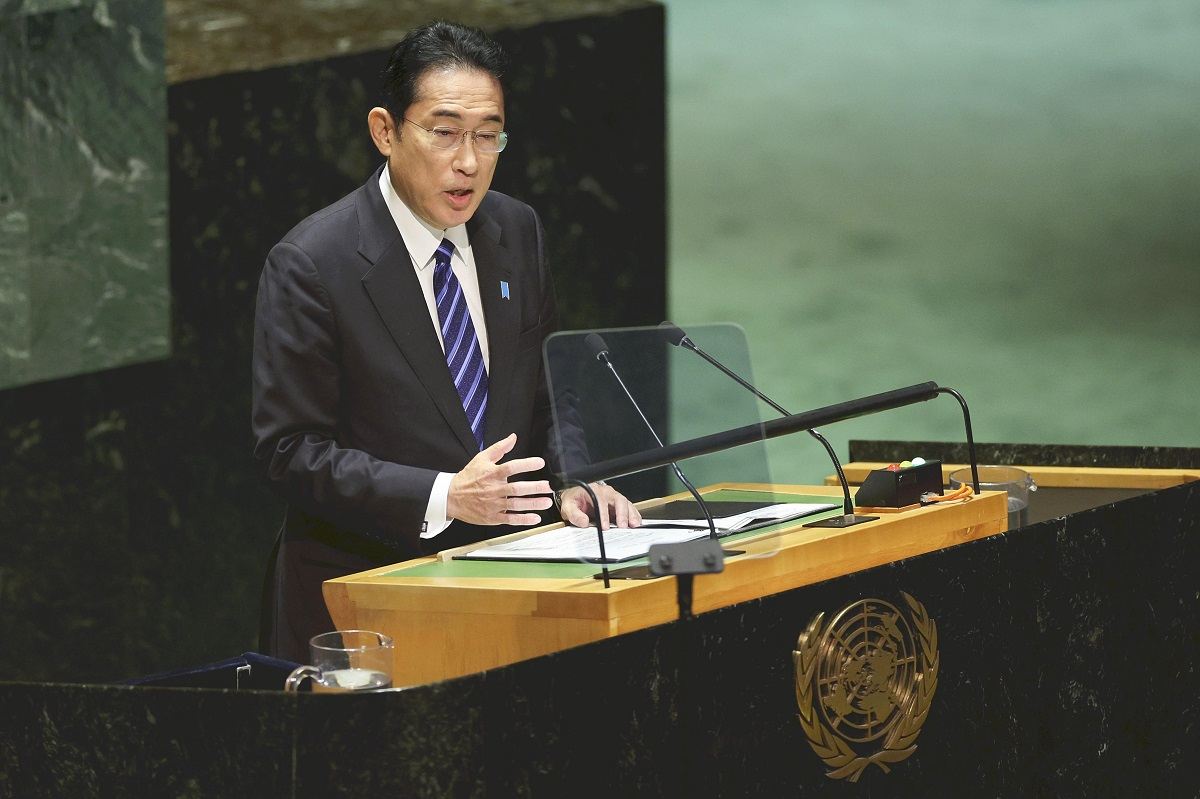The Japanese government has called on the international community to adopt a new interpretation of the UN Convention on the Law of the Sea (UNCLOS), in a bid to maintain current exclusive economic zones even if sea levels rise due to global warming.
Through its call to maintain existing low-tide lines — shorelines where the sea and land meet during low tide, the basis for EEZs — Japan apparently aims to lead the international debate on the issue and strengthen cooperation with Pacific island countries facing the threat of rising sea levels.
UNCLOS, also known as the supreme law of the sea, is an international law that serves as the basis for territorial waters, EEZs, continental shelves and other matters. It was adopted in 1982 and came into effect in 1994. As of May, it had been ratified by 168 countries, including Japan and members of the European Union.
In his speech at the UN General Assembly session on 19 September, Prime Minister Fumio Kishida said he “supports maintaining current low-tide lines based on UNCLOS even after coastlines have receded into the land due to rising sea levels.”
Kishida’s remarks suggest the issue of rising sea levels, which was not envisioned when UNCLOS was adopted, should be handled through a new interpretation of the convention. This was the first time for Kishida to mention the issue at the United Nations.
Under UNCLOS, countries that have signed the convention have exclusive rights to fish, develop natural resources and enjoy other maritime interests within their EEZs, which extend to 200 nautical miles (about 370 kilometers) from their low-tide lines.
There are no explicit provisions in the convention for situations in which coastlines recede into the land due to high sea levels, so the UN International Law Commission (ILC) established a working group in 2019 to begin discussions on how to deal with the issue.
If receded low-tide lines are used as the starting point of the 200 nautical miles, the areas covered by EEZs would also move landward, reducing the areas around the outer boundary of countries where they can exercise rights to fish and develop natural resources.
Conversely, if EEZs are fixed on the basis of current low-tide lines, the area of the high seas will be maintained even after sea levels rise, creating a sense of unfairness among countries seeking to expand their activities in high seas.
In February, the Japanese government for the first time compiled its view that the current low-tide lines should be used as the basis for EEZs.
Japan has the sixth-longest shoreline in the world at about 35,000 kilometers, and one of the largest EEZs. A senior Liberal Democratic Party official said making relevant preparations for rising sea levels is a “matter of vital importance” to protect maritime interests.
Japanese authorities also appear to believe that this move will promote cooperation with South Pacific island nations, which constitute a strategic stronghold where the United States and China are vying for power. Japan’s policy was conveyed to a delegation of the Pacific Islands Forum by then Foreign Minister Yoshimasa Hayashi when the delegation visited Japan in February.
The Japanese government hopes to contribute to measures against rising sea levels and fulfill the expectations of island nations. It also aims to increase the number of countries that support Japan’s policy by actively communicating it at a related UN meeting to be held in autumn.
“The consent of all signatories is required to establish a new interpretation of a law,” said Masahiko Asada, a professor emeritus of international law at Kyoto University and a member of the ILC. “Japan will probably aim for a unanimous resolution through meetings of signatories and other opportunities,” Asada said.
SOURCE: THE YOMIURI SHIMBUN/PACNEWS














